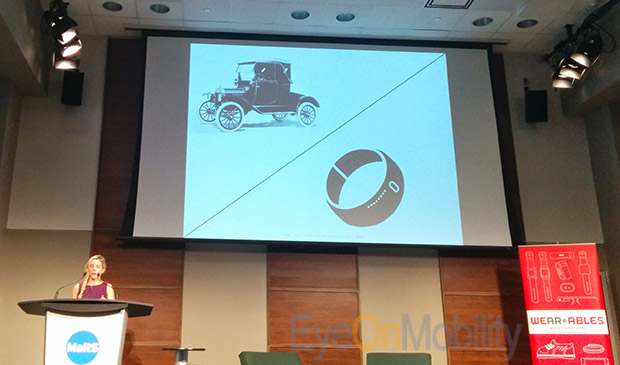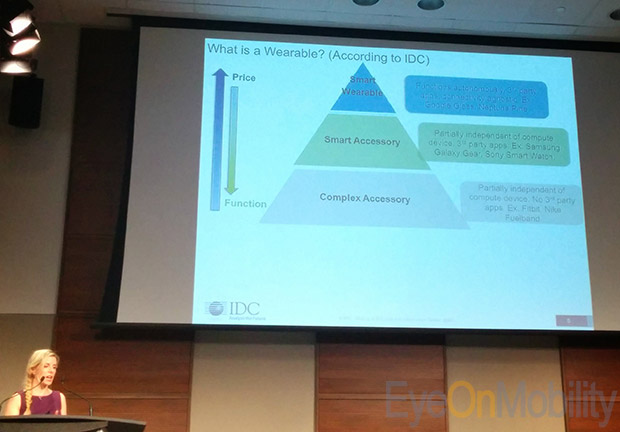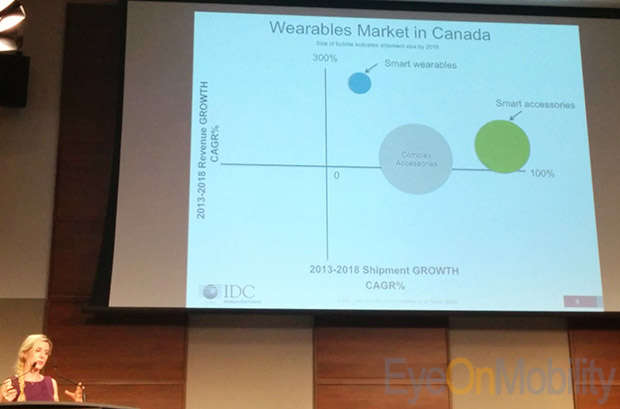The latest WeAreWearables event kicked off last night with a look at the state of the wearables market in Canada. The presentation by Krista Napier, Research Manager, Mobility and Consumer Research at IDC Canada, gave us a look at where things stand today and a taste of where they are headed in the next few years. The future certainly looks bright.
While the current market is compared to being equivalent to the automotive industry at the time of the Ford Model T, things are expected to change very quickly. Interest in wearables is there with 10% of Canadians interested in smartglasses, 9% in smartwatches and 18% in devices focused on health and fitness. While interest was high, adoption rates remained extremely low.

IDC has broken the market up into three categories:
- Complex accessories: Devices that are partially independent of a computing device (or able to operate connected or disconnected from another device) and not running third party apps. Examples include the Fitbit or the Nike FuelBand
- Smart accessories: Devices partially independent of computing devices but able to run third party apps. Examples include the Samsung Gear 2 smartwatches or the Sony SmartWatch 2
- Smart Wearables: Able to function autonomously and supporting both third party apps. Examples include Google Glass and the Neptune Pine smartwatch

By 2018, the Canadian market could be worth CA$600 million with strong shipment growth every year. Thanks largely to their cost and clear value proposition, complex accessories will be responsible for the bulk of shipments. Not far behind and quickly catching up will be smart accessories. Smart wearables will remain a profitable but niche area as battery life and pricing will remain key barriers to widespread adoption.

“Wearables represent an exciting category in Canada — one expected to be valued in the hundreds of millions of dollars in just a few short years as we begin to reimagine everything we put on ourselves… but it’s still a very young market today,” says Krista Napier, manager, Mobility and Consumer Research at IDC Canada. “Wearables are at the intersection of fashion and technology; they must add value and be perceived as seamless, simple, and secure but cannot do so at the cost of looking good.”
Manufacturers and startups are already realizing that they will need to strike a balance between usability, fashion and cost to reach the average consumer. Upcoming devices like the upcoming Moto 360 and Nymi (itself the topic of a past WeAreWearables event) are good examples of this.
Source : IDC
